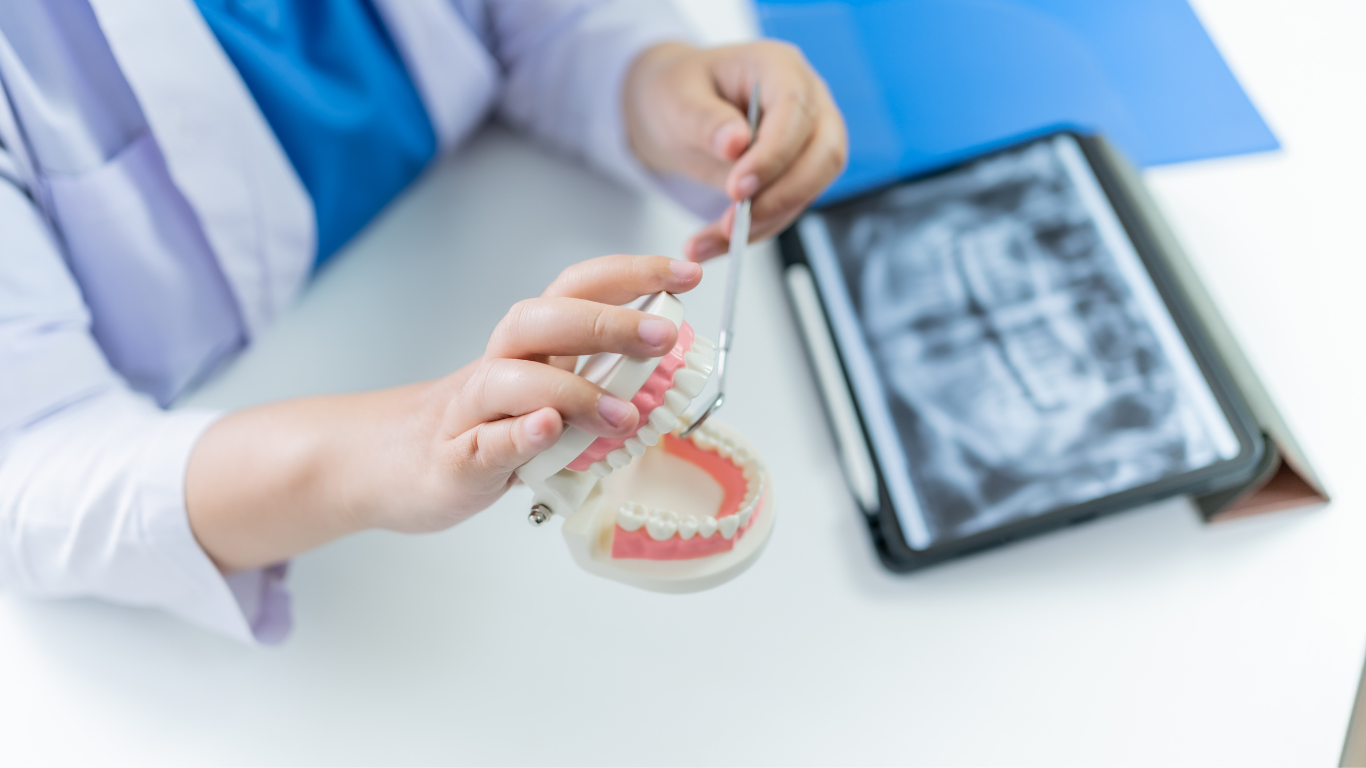Introduction to Dental Crowns Before and After
If you’ve ever wondered how a chipped, discolored, or weakened tooth can be restored to its former glory, dental crowns might just be the answer you’re looking for. As of April 4, 2025, dental crowns remain one of the most popular and effective solutions in restorative dentistry, offering both functional and aesthetic benefits. Whether you’re considering this procedure for yourself or simply curious about the transformation, understanding the “before and after” of dental crowns can shed light on why so many people opt for this treatment. This comprehensive guide will walk you through every aspect of dental crowns—how they work, what to expect, and the dramatic changes they bring to smiles worldwide.
Dental crowns are custom-made caps placed over damaged teeth to restore their shape, strength, and appearance. The “before and after” journey is a key focus for patients, as it highlights the real-world impact of the procedure. From repairing a cracked molar to enhancing a stained front tooth, the results can be life-changing. In this blog post, we’ll explore the process, materials, costs, and real patient experiences, all while keeping an informational tone to help you make an informed decision. Let’s dive into the world of dental crowns and see how they transform smiles, one tooth at a time.
What Are Dental Crowns?
At their core, dental crowns are prosthetic devices designed to cover a tooth that’s been compromised by decay, injury, or wear. Think of them as a protective helmet for your tooth—crafted to fit perfectly and blend seamlessly with your natural smile. Dentists use crowns to address a variety of issues: restoring a tooth after a root canal, covering a large filling, fixing cracks or fractures, or even improving the look of misshapen or discolored teeth. By 2025, advancements in dental technology have made crowns more durable and natural-looking than ever.
The “before” stage often involves a tooth that’s unsightly or painful—perhaps a jagged edge from a break or a dark spot from decay. The “after” is where the magic happens: a smooth, strong, and aesthetically pleasing tooth that functions like new. Crowns can be made from materials like porcelain, ceramic, metal, or a combination, each offering unique benefits. This versatility makes them a go-to solution for both cosmetic and structural dental needs, setting the stage for the transformative before-and-after results patients seek.
Why People Get Dental Crowns
So, why do people turn to dental crowns? The reasons are as varied as the patients themselves. For some, it’s about function—restoring a tooth so they can chew without pain or sensitivity. A cracked molar, for instance, might make eating a challenge, and a crown can bring back normalcy. Others pursue crowns for cosmetic reasons, like covering a front tooth that’s stained beyond whitening or oddly shaped. In 2025, with social media amplifying the value of a perfect smile, aesthetic motivations are on the rise.
Crowns also play a critical role in dental health. After a root canal, a tooth becomes brittle and prone to breaking—crowning it adds a layer of protection. Similarly, severe decay that’s too extensive for a filling often requires a crown to save the tooth from extraction. The before-and-after difference isn’t just visual; it’s about quality of life—eating comfortably, speaking clearly, and smiling confidently. Whether driven by necessity or vanity, the decision to get a crown often leads to a dramatic improvement.
The Dental Crown Procedure: Step-by-Step
Understanding the process behind dental crowns helps demystify the before-and-after transformation. Here’s how it typically unfolds in 2025, based on current dental practices.
First, you’ll have a consultation with your dentist. They’ll examine your tooth—often using X-rays—to assess damage and determine if a crown is the best fix. If so, the “before” phase begins with preparation. The dentist reshapes the tooth, removing decay or damaged areas and filing it down to make room for the crown. This might sound daunting, but local anesthesia keeps it pain-free. An impression of your tooth is then taken, either with putty or a digital scanner, to ensure the crown fits perfectly.
Next, a temporary crown is placed while the permanent one is crafted in a lab—a process that can take one to two weeks, though same-day crowns using CEREC technology are increasingly common. When the permanent crown is ready, you return for the “after” phase. The dentist removes the temporary crown, checks the fit and color of the new one, and cements it in place. Adjustments ensure it feels natural. The result? A tooth that looks and works better than before, often in just two visits.
Types of Dental Crowns and Materials
The material of a dental crown plays a huge role in its before-and-after impact. In 2025, patients have several options, each with pros and cons.
Porcelain and ceramic crowns are top choices for their natural appearance, mimicking the translucency of real teeth. They’re ideal for front teeth, where aesthetics matter most, and advances in ceramic strength make them durable too. Before, you might have a discolored or broken tooth; after, it’s a seamless part of your smile. Porcelain-fused-to-metal (PFM) crowns combine a metal base with a porcelain coating, offering strength for back teeth and decent looks—though the metal edge can sometimes show over time.
Metal crowns, like gold or stainless steel, prioritize durability over beauty. They’re less common for visible teeth but excel in molars, turning a weak tooth into a powerhouse. Zirconia crowns, a newer option, blend strength and aesthetics, resisting chips and blending well with natural teeth. Each material transforms the “before” state—whether it’s function or appearance—into an “after” that meets your needs. Your dentist will guide you based on location, budget, and goals.
Before Dental Crowns: What to Expect
The “before” phase of getting a dental crown can feel like a mix of anticipation and uncertainty. Your tooth might be causing pain, sensitivity, or embarrassment—maybe it’s a cracked incisor from a fall or a decayed molar that throbs with every bite. Visually, it could be discolored, uneven, or jagged, affecting your confidence. Functionally, chewing or speaking might be tricky, pushing you to seek a fix.
Preparation involves some discomfort, like drilling or filing, but anesthesia keeps it manageable. You might feel pressure or hear the tools, which can be unnerving if you’re anxious about dental work. Temporary crowns, worn between visits, can be a bit awkward—less sturdy and sometimes loose—but they protect the tooth. Patients often report the “before” state as a low point, making the “after” all the more rewarding. Knowing what’s ahead helps ease the nerves and sets realistic expectations.
After Dental Crowns: The Transformation
The “after” of dental crowns is where the payoff shines. Once cemented, your tooth looks and feels revitalized. A chipped front tooth becomes smooth and white, blending with its neighbors. A weakened molar regains its bite strength, letting you enjoy meals without worry. Patients often describe the shift as night and day—pain fades, confidence soars, and the mirror reflects a smile they’re proud of.
Aesthetically, the crown matches your natural teeth in color and shape, thanks to precise lab work or digital design. Functionally, it’s like hitting reset—chewing, speaking, and brushing return to normal. Sensitivity might linger for a few days as your mouth adjusts, but it typically fades. The “after” isn’t just about the tooth; it’s about reclaiming comfort and self-assurance, a transformation that’s both subtle and profound.
Real-Life Dental Crowns Before and After Examples
Seeing is believing, and real patient stories highlight the power of dental crowns. Take Sarah, a 34-year-old from Texas, who chipped her front tooth in a biking accident. Before, she hid her smile, feeling self-conscious at work. After a porcelain crown, her tooth looked flawless—her colleagues couldn’t tell it wasn’t natural. She shared photos online, marveling at the seamless match.
Then there’s Mark, a 50-year-old from California, whose molar cracked after years of grinding. Before, eating was painful, and the tooth’s dark filling stood out. Post-crown (zirconia), he could chew steak again, and the crown’s strength gave him peace of mind. Dental blogs like those from Colgate and WebMD feature similar cases—stained teeth whitened, broken ones rebuilt—showing how crowns turn dental woes into wins.
Benefits of Dental Crowns
The before-and-after benefits of dental crowns are why they’re a staple in 2025 dentistry. Functionally, they restore a tooth’s ability to handle daily tasks—biting, chewing, speaking—without pain or risk of further damage. Aesthetically, they enhance your smile, fixing discoloration, misalignment, or gaps that whitening or braces can’t address. They’re a one-stop solution for both health and beauty.
Crowns also protect vulnerable teeth, like those post-root canal, preventing fractures that could lead to extraction. They’re long-lasting—10 to 15 years with care—making them a smart investment. For many, the psychological boost is huge; a restored smile can lift self-esteem, impacting social and professional life. From pain relief to picture-perfect teeth, the benefits are tangible and lasting.
Risks and Considerations
No procedure is without risks, and dental crowns have their share. Before committing, consider potential downsides. The preparation process removes enamel, making the tooth reliant on the crown—there’s no going back to its original state. Sensitivity or discomfort can follow, especially if the nerve was recently treated. Poorly fitted crowns might irritate gums or trap bacteria, leading to decay or infection if not addressed.
Allergic reactions to metal crowns are rare but possible, and porcelain can chip over time, though zirconia reduces this risk. Cost is another factor—crowns aren’t cheap, and insurance varies. The “after” might not meet sky-high expectations if color or fit isn’t perfect, though adjustments help. Weighing these against the benefits ensures you’re ready for the journey.
Cost of Dental Crowns in 2025
Speaking of cost, dental crowns in 2025 reflect material, location, and dentist expertise. On average, expect $800 to $1,500 per crown without insurance. Porcelain or ceramic runs $1,000-$1,500, while metal can dip to $800-$1,200. Zirconia, blending durability and looks, often hits $1,200-$1,800. Same-day CEREC crowns might add $200-$500 for convenience.
Insurance often covers 50%-80% if medically necessary (e.g., post-root canal), but cosmetic crowns are out-of-pocket. In the U.S., urban areas like New York or LA charge more than rural spots. Financing plans or dental discount programs can ease the sting. The “before” cost might seem steep, but the “after” value—years of use and a better smile—often justifies it.
How Long Do Dental Crowns Last?
Durability is a big “after” perk. With proper care, crowns last 10-15 years, sometimes 20 or more. Porcelain and ceramic might wear faster if you grind your teeth, while metal and zirconia endure heavy use. Before, your tooth might’ve been at risk; after, it’s fortified for the long haul.
Longevity hinges on habits—brushing twice daily, flossing, and avoiding hard foods like ice or nutshells. Regular dental checkups catch issues early. A 2025 study from the American Dental Association notes 90% of well-maintained crowns last over a decade, making them a reliable fix.
Caring for Your Dental Crowns
Post-crown care ensures the “after” stays stellar. Treat it like a natural tooth—brush with a soft-bristle toothbrush, floss daily (use floss threaders for tight spots), and rinse with an antiseptic mouthwash. Avoid sticky candies or chewing gum on that side to prevent loosening. If you grind at night, a mouthguard protects the crown from stress.
Sensitivity might linger for weeks—cold or hot foods could sting—so ease into your routine. Checkups every six months let your dentist monitor fit and health. Before, neglect might’ve caused the problem; after, diligence keeps your crown shining.
Dental Crowns vs. Other Dental Solutions
How do crowns stack up? Before choosing, compare them to alternatives. Fillings fix smaller cavities but lack the strength for big damage—crowns step in where fillings fail. Veneers enhance front teeth cosmetically but don’t reinforce like crowns, which tackle both looks and structure. Bridges replace missing teeth, using crowns as anchors, while implants stand alone but cost more.
Root canals often precede crowns, not replace them. Before, your issue might suit a simpler fix; after, a crown’s versatility often wins for severe cases. Your dentist will weigh options based on your tooth’s state.
Finding the Right Dentist for Dental Crowns
The “before and after” hinges on your dentist. In 2025, look for a pro with experience in restorative work—check reviews on Yelp or Google for crown-specific feedback. Ask about materials and tech (e.g., CEREC for same-day results). A good dentist explains the process, shows before-and-after photos of past patients, and tailors the crown to your bite and smile.
Consultations are key—bring questions about cost, timeline, and care. Before, you might feel unsure; after, the right dentist delivers a crown that transforms your tooth and trust in dental care.
Conclusion: The Power of Dental Crowns Before and After
Dental crowns are a game-changer, turning damaged, unsightly teeth into strong, beautiful assets. The “before” might be a source of pain or insecurity, but the “after” offers relief, function, and a smile you’ll love. As of April 2025, with advanced materials and techniques, crowns are more accessible and effective than ever. Whether you’re fixing a crack, capping a root canal, or boosting your look, this guide covers the journey from start to finish. Ready to explore crowns for yourself? Talk to your dentist and see the difference firsthand. What’s your crown story?




